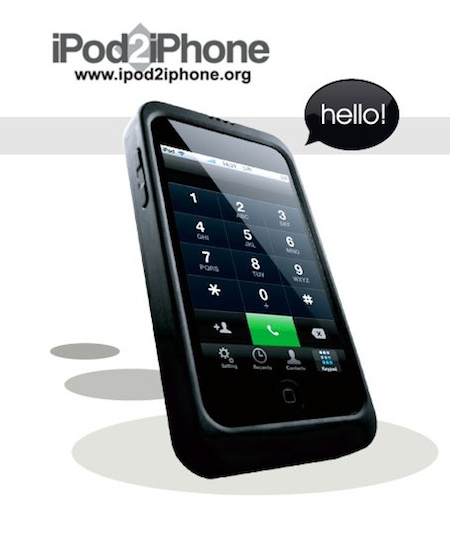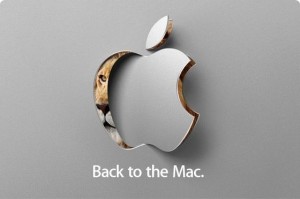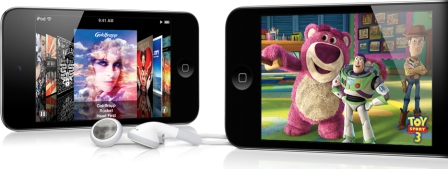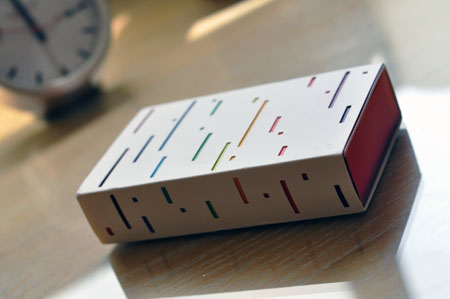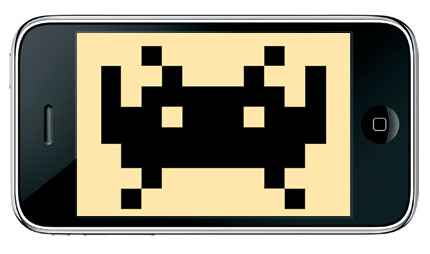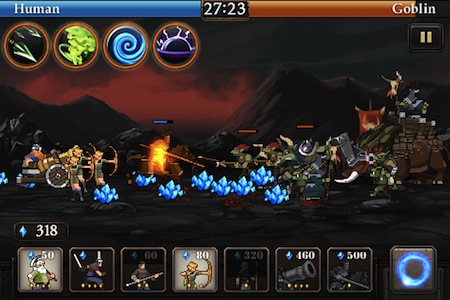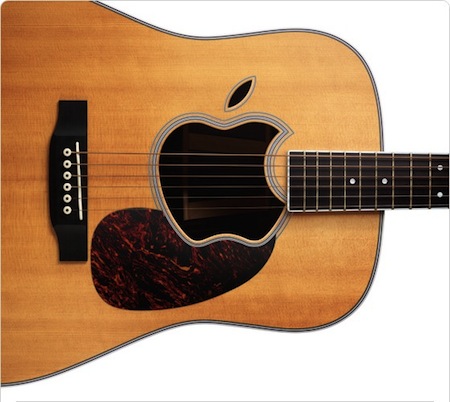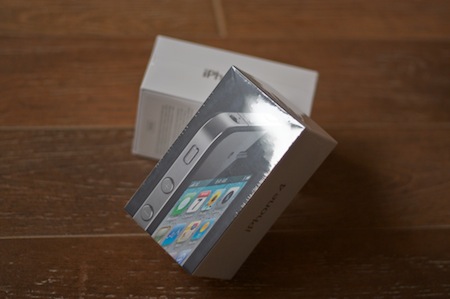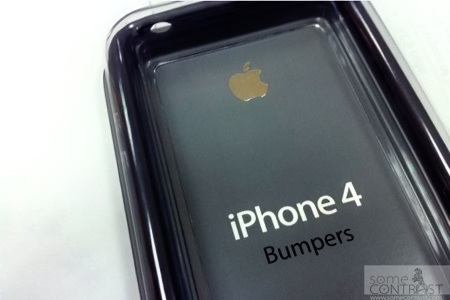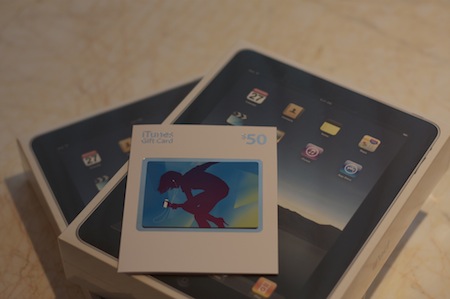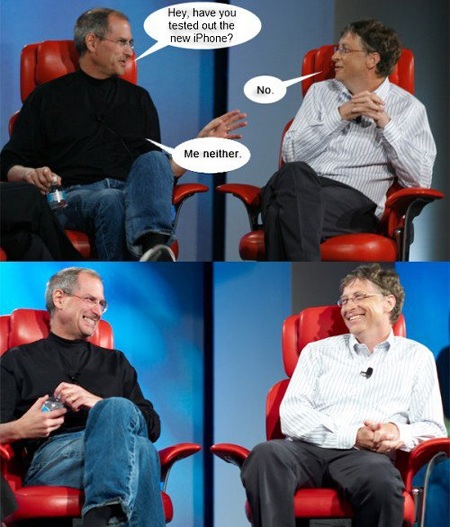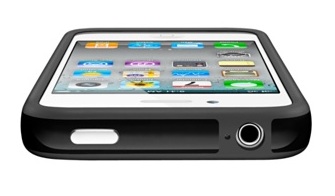It will be held on 20th of October. Let’s hope there is something about a new Macbook Air in it, I really need to update mine.
In April 2010, Apple Inc. launches its eagerly anticipated iPad, a multimedia computer tablet, which was the third major innovation that Apple had released over the last decade. It was another revolutionary product that could emulate the smashing success of the iPod and the iPhone Expectations ran high, and The Economist displayed the release of the iPad on its magazine cover with Jobs illustrate a biblical figure, noting that, “The enthusiasm of the Apple faithful may be overdone, but Mr. Jobs’s record suggests that when he blesses a market, it takes off.”
Contents [hide]
- 1 History of the Apple Computer
- 2 Links
History of the Apple Computer
Apple History 2010
January 3, 2010: The Fox Broadcasting Company airs The Simpsons TV show. A laptop computer with Apple-like logo appears. An Apple Mac OS-like screen is used to denote a person forgetting something.
January 5, 2010: Apple announces that more than three billion apps have been downloaded from its revolutionary App Store by iPhone and iPod touch users worldwide. “Three billion applications downloaded in less than 18 months – this is like nothing we’ve ever seen before,” says Steve Jobs, Apple’s CEO. “The revolutionary App Store offers iPhone and iPod touch users an experience unlike anything else available on other mobile devices, and we see no signs of the competition catching up anytime soon.” iPhone and iPod touch customers in 77 countries worldwide can choose from a range of apps in 20 categories, including games, business, news, sports, health, reference and travel.
January 27, 2010: Apple introduces iPad, a device for browsing the web, reading and sending email, enjoying photos, watching videos, listening to music, playing games, reading e-books and much more. iPad’s responsive high-resolution Multi-Touch display lets users physically interact with applications and content. iPad is just 0.5 inches thick and weighs just 1.5 pounds. It is thinner and lighter than any laptop or netbook. iPad includes 12 new innovative apps designed especially for the iPad, and will run almost all of the over 140,000 apps in the App Store.
February 9, 2010: Apple introduces Aperture 3, the next major release of its powerful photo editing and management software, with over 200 new features including Faces, Places and Brushes. Building on the Faces and Places features introduced in iPhoto’09, Aperture 3 makes it even easier and faster to organize large photo libraries. Aperture 3 introduces new tools to refine photos including Brushes for painting image adjustments onto parts of your photo, and Adjustment Presets for applying professional photo effects with just one click. Stunning new slideshows let users share their work by weaving together photos, audio, text and HD video.
February 25, 2010: Apple announces that music fans have purchased and downloaded over 10 billion songs from the iTunes Store, the world’s most popular online music, TV and movie store. The 10 billionth song, “Guess Things Happen That Way” by Johnny Cash, was purchased by Louie Sulcer of Woodstock, Georgia. As the winner of the iTunes Countdown to 10 Billion Songs, Louie will receive a $10,000 iTunes Gift Card. iTunes is the number one music retailer in the world and features the world’s largest music catalog with over 12 million songs. The iTunes Store has a catalog of over 12 million songs, over 55,000 TV episodes and over 8,500 movies including over 2,500 in stunning high definition video. With Apple’s features such as iTunes Movie Rentals, integrated podcasting support, the ability to turn previously purchased tracks into complete albums at a reduced price, and seamless integration with iPod and iPhone, the iTunes Store is the best way for Mac and PC users to legally discover, purchase and download music and video online.
March 2, 2010: Apple files a lawsuit against HTC for infringing on 20 Apple patents related to the iPhone’s user interface, underlying architecture and hardware. The lawsuit was filed concurrently with the U.S. International Trade Commission (ITC) and in U.S. District Court in Delaware. “We can sit by and watch competitors steal our patented inventions, or we can do something about it. We’ve decided to do something about it,” said Steve Jobs, Apple’s CEO. “We think competition is healthy, but competitors should create their own original technology, not steal ours.”
March 18, 2010: Apple announces the death of Apple Board member Jerome B. (Jerry) York. York, the chairman, president and CEO of Harwinton Capital, joined Apple’s Board of Directors in 1997. He was the former CFO of IBM and Chrysler, and former vice chairman of Tracinda. He is widely acknowledged for his contributions at Chrysler and IBM during their turnarounds. “Jerry joined Apple’s Board in 1997 when most doubted the company’s future. He has been a pillar of financial and business expertise and insight on our Board for over a dozen years,” said Steve Jobs, Apple’s CEO. “It’s been a privilege to know and work with Jerry, and I’m going to miss him a lot.” Jerry York was born in Memphis, Tennessee in 1938. He graduated from the United States Military Academy, and received an MS from the Massachusetts Institute of Technology and an MBA from the University of Michigan. Trained as an engineer, York worked his way up through Chrysler to become CFO.
March 29, 2010: Apple’s new iPad will be available in all 221 US Apple retail stores and most Best Buy stores this Saturday, April 3, beginning at 9 a.m. Starting at $499, iPad lets users browse the web, read and send email, enjoy and share photos, watch HD videos, listen to music, play games, read ebooks and much more, all using iPad’s revolutionary Multi-Touch user interface. iPad is 0.5 inches thick and weighs 1.5 pounds – thinner and lighter than any laptop or netbook. It and delivers up to 10 hours of battery life. Apple retail stores will offer a free Personal Setup service to every customer who buys an iPad at the store, helping them customize their new iPad by setting up their email, loading their favorite apps from the App Store, and more. Also beginning Saturday morning, all US Apple retail stores will host special iPad workshops to help customers learn more about this magical new product. Apple announces that iPad will be available in Wi-Fi models on April 3 in the US for a suggested retail price of $499 for 16GB, $599 for 32GB, and $699 for 64GB. The Wi-Fi + 3G models will be available in late April for a suggested retail price of $629 for 16GB, $729 for 32GB and $829 for 64GB. iPad will be sold in the US through the Apple Store, Apple’s retail stores, most Best Buy stores, select Apple Authorized Resellers and campus bookstores. The iBooks app for iPad including Apple’s iBookstore will be available as a free download from the App Store in the US on April 3.
April 3, 2010: Apple begins sales of the iPad tablet computer in the USA. The unit available features Wi-Fi and 9.7-inch touchscreen display. Price is US$499-829. First day sales total over 300,000 units. First month sales: 1 million.
April 5, 2010: Apple announces that it sold over 300,000 iPads in the US as of midnight Saturday, April 3. These sales included deliveries of pre-ordered iPads to customers, deliveries to channel partners and sales at Apple Retail Stores. Apple also announced that iPad users downloaded over one million apps from Apple’s App Store and over 250,000 ebooks from its iBookstore during the first day. iPad users, on average, downloaded more than three apps and close to one book within hours of unpacking their new iPad.

The Book of Jobs: Hope, hype and Apple’s iPad. The Economist’s cover.
April 8, 2010: Apple previews its iPhone OS 4 software and releases a beta version of the software to iPhone Developer Program members. The iPhone OS 4 beta release includes an updated Software Development Kit (SDK) with over 1,500 new Application Programming Interfaces (APIs) and over 100 new features that will be available to iPhone and iPod touch users this summer. New features include Multitasking for third party apps; Folders to better organize and access apps; improved Mail with a unified inbox, fast inbox switching and threaded messages; enhanced Enterprise support with even better data protection, mobile device management, wireless app distribution and more; Apple’s new iAd mobile advertising platform; and iBooks, the delightful new ebook reader and online bookstore recently debuted on the iPad. “iPhone OS 4 is the fourth major release of the world’s most advanced mobile operating system,” said Steve Jobs, Apple’s CEO. “We’re delivering over 100 new features, including multitasking, folders, a unified inbox, deeper Enterprise support, and an iPhone version of our iBooks reader and online iBookstore.” Learn more about professional event production.
April 13, 2010: Apple updates its line of high-end MacBook Pro line with faster Intel processors, powerful next-generation NVIDIA graphics and even longer battery life. The 13-inch MacBook Pro features the new NVIDIA GeForce 320M graphics processor for up to 80 percent faster graphics and a groundbreaking 10-hour built-in battery. The new 15-inch and 17-inch MacBook Pro models feature Intel Core i5 and i7 processors and Apple’s new automatic graphics switching technology that toggles seamlessly between powerful NVIDIA GeForce GT 330M and energy efficient Intel HD Graphics processors. Prices start at $1199 for the 13-inch model.
May 3, 2010: Apple announces that it sold its one millionth iPad on Friday, just 28 days after its introduction on April 3. iPad users have already downloaded over 12 million apps from the App Store and over 1.5 million ebooks from the new iBookstore. “One million iPads in 28 days—that’s less than half of the 74 days it took to achieve this milestone with iPhone,” said Steve Jobs, Apple’s CEO. “Demand continues to exceed supply and we’re working hard to get this magical product into the hands of even more customers.”
May 26, 2010: Apple’s stock market value overtakes Microsoft’s. Later, in the third quarter of 2010, Apple’s revenues will surpass those of Microsoft. Market capitalization of Apple (US$222 billion) passes Microsoft (US$219 billion) for the first time since December 19,1989. Apple stock is worth more than ten times what they were ten years ago, whereas Microsoft stock is down 20 percent over the same time period.
May 28, 2010: Apple begins sales of the iPad tablet computer outside the USA, in Germany, France, Italy, Switzerland, Spain, Britain, Japan, Australia, and Canada.
June 7, 2010: Apple releases Safari 5, the latest version of its web browser, featuring the new Safari Reader for reading articles on the web without distraction, a 30 percent performance increase over Safari 4, and the ability to choose Google, Yahoo! or Bing as the search service powering Safari’s search field. Available for both Mac and Windows, Safari 5 includes improved developer tools and supports more than a dozen new HTML5 technologies that allow web developers to create rich, dynamic websites. With Safari 5, developers can now create secure Safari Extensions to customize and enhance the browsing experience. “Safari continues to lead the pack in performance, innovation and standards support,” said Philip Schiller, Apple’s senior vice president of Worldwide Product Marketing. “Safari now runs on over 200 million devices worldwide and its open source WebKit engine runs on over 500 million devices.” Safari Reader makes it easy to read single and multipage articles on the web by presenting them in a new, scrollable view without any additional content or clutter. When Safari 5 detects an article, users can click on the Reader icon in the Smart Address Field to display the entire article for clear, uninterrupted reading with options to enlarge, print or send via email. Powered by the Nitro JavaScript engine, Safari 5 on the Mac runs JavaScript 30 percent faster than Safari 4, three percent faster than Chrome 5.0, and over twice as fast as Firefox 3.6. Safari 5 loads new webpages faster using Domain Name System (DNS) prefetching, and improves the caching of previously viewed pages to return to them more quickly.




